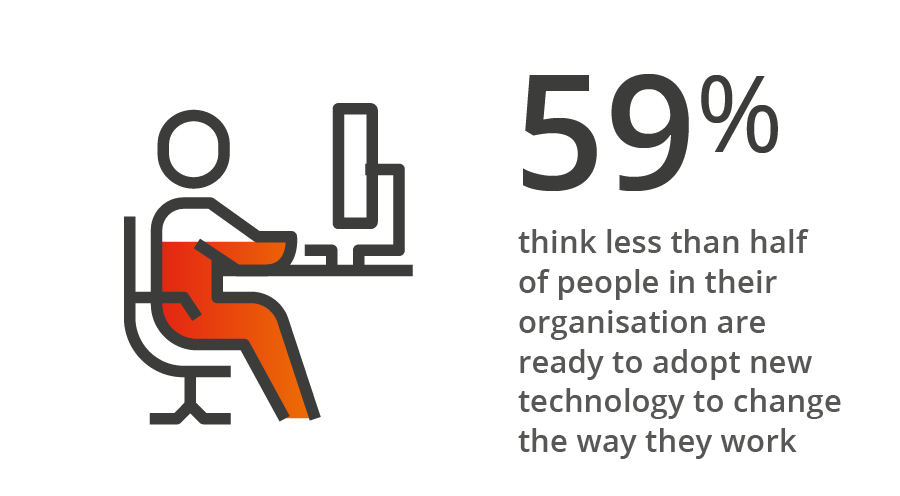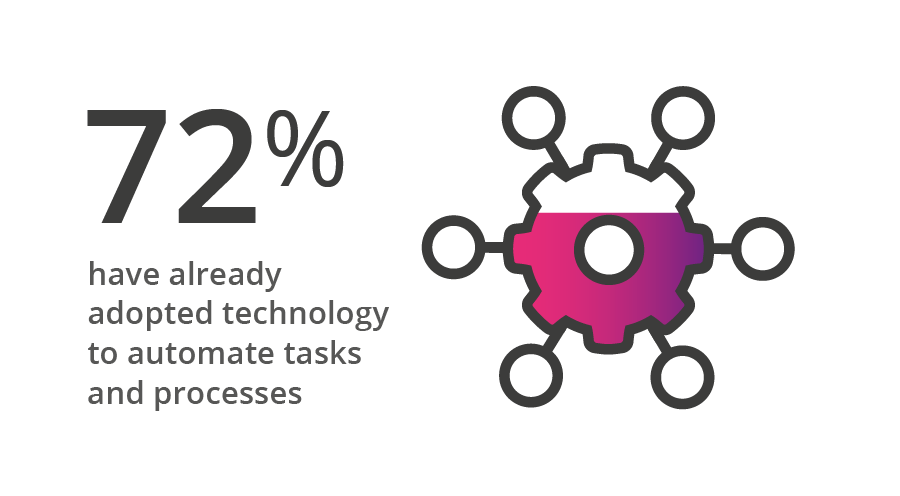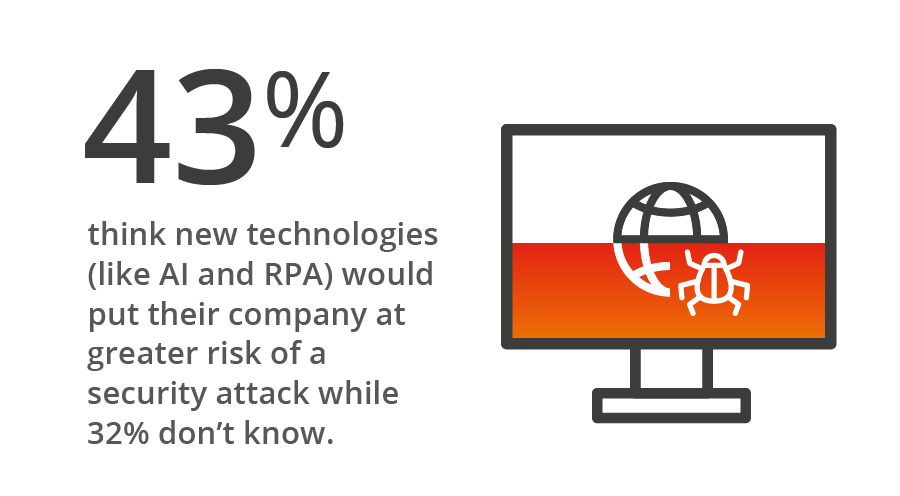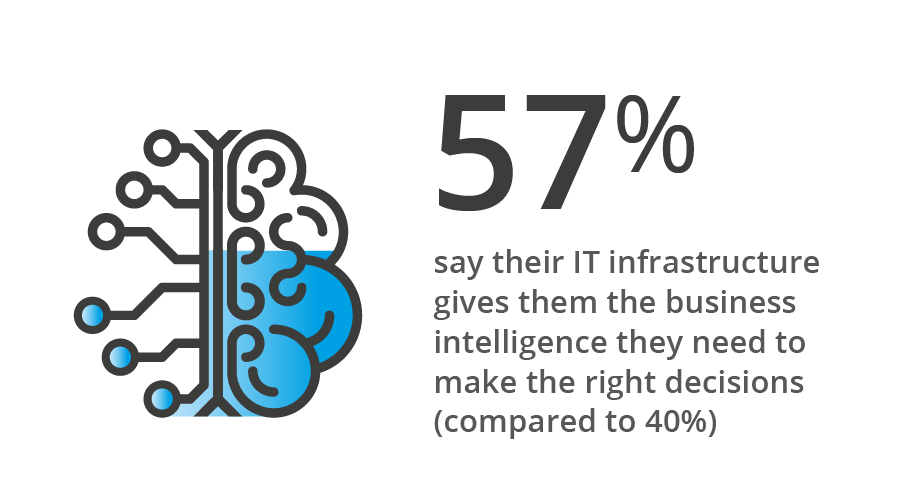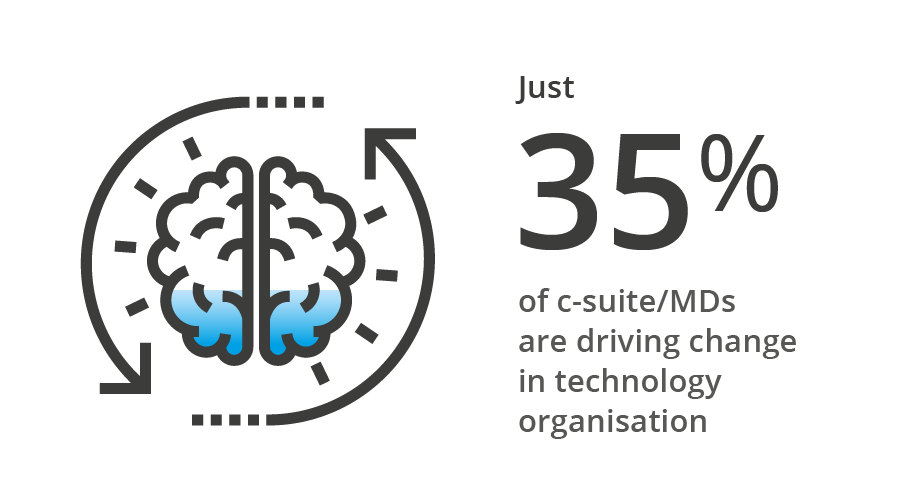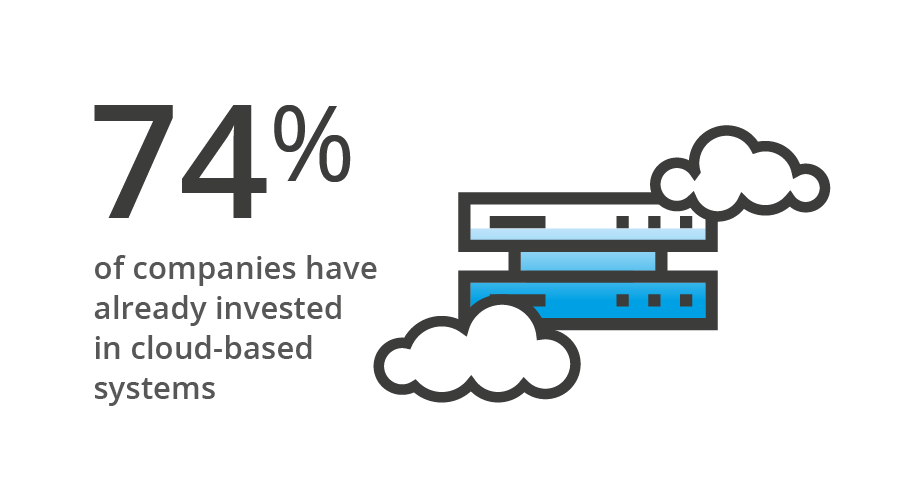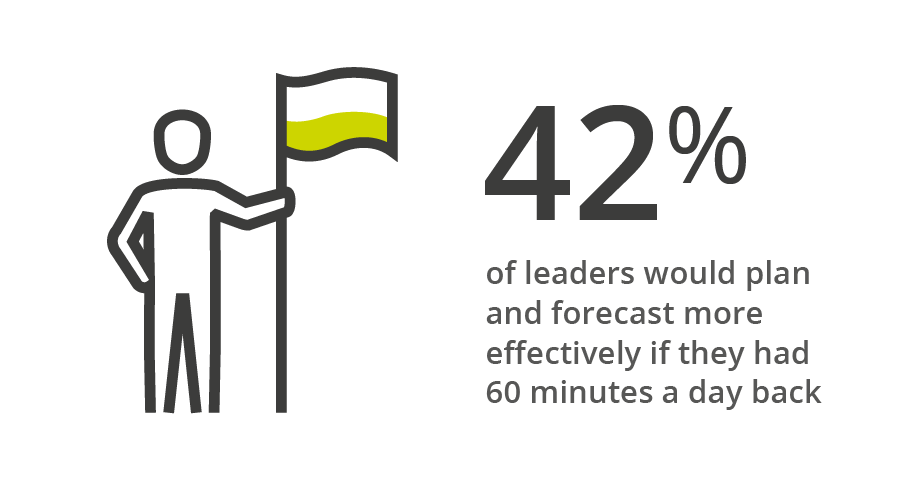Introduction
In the twelve months since the last survey the pressure on organisations has continued at an unrelenting pace. Businesses are facing competitive markets as well as compliance requirements such as the General Data Protection Regulation (GDPR), Making Tax Digital (MTD), the government’s Digital Strategy and the uncertainty around Brexit. In a world of major change, never before has the call for businesses to reimagine their organisations been more relevant or resonated more evidently.
This year’s report delves into the technologies that are making a positive impact. We explore disruptive technologies such as the Cloud, the Internet of Things (IoT), Artificial Intelligence (AI) and Robotic Process Automation (RPA) – with some surprising findings in store.
The following summary extracts the key findings around the technology trends and challenges identified from the Trends Survey. It also provides an overview of the state of digital readiness among our respondents and examines what businesses need to do to realise the untapped potential of disruptive technologies.
